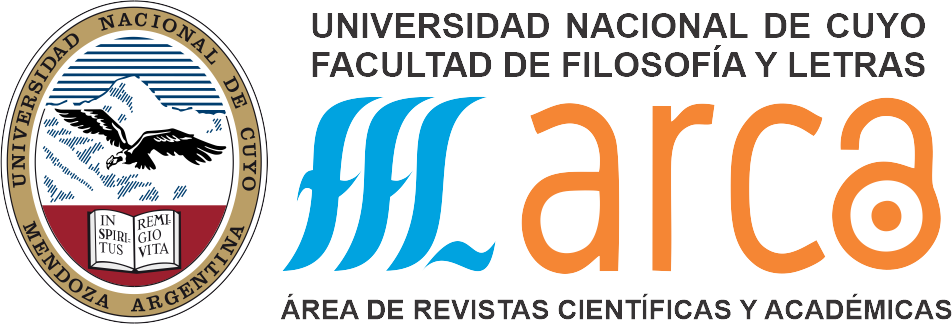Orality in Writing
Linguistic Landscape in Educational Establishments: “I Write it to Be Heard”
Keywords:
orality, linguistic landscape, educational establishmentsAbstract
This work is part of the research project “Regional Language Observatory. Language in the linguistic landscape of Mendoza schools” by SIIP (2019-2020). Linguistic landscape (PL) is defined as texts in streets, buildings and places of public access (Laundry and Bourhis, 1997). These texts show a special use of language, linked to social functions crossed by communicative immediacy. Although the corpus considered in the PL is made up of written texts, these are strongly “oralized”. For this reason, we start from the assumption that orality and writing are not dichotomous modalities but form a continuum (Koch & Oesterreicher, 2007). And from this assumption, we formulate the objective of this study: to investigate how orality is present in writing. This research is exploratory. The corpus is made up of photos of both temporary and permanent posters from nine medium-level educational establishments in Mendoza. Our hypothesis is that the posters that are made from handwriting are marked by dialogicity and communicate content linked to subjectivity, are closer to the extreme of orality. On the contrary, institutional or private signs that have been made on supports that claim to be permanent present few elements of the oral modality of the language and respect the conventions of writing. The results allow us to corroborate these assumptions: we have registered in handwritten signs and in graffiti processes of elisions, epentheses, lengthening, substitutions and original representations of sounds to provoke effects of meaning. The theme of texts with these features is related to the construction of personal identity and that of the group. These types of characteristics are scarce or non-existent in signs made on supports destined to remain in time and with printing.
References
Backhaus P. (2006). Multilingualism in Tokyo: A Look into the Linguistic Landscape. International Journal of Multilingualism, 3(1), 52-66.
Castillo Lluch, M. y Sáez Rivera, D. (2011). Introducción al paisaje lingüístico de Madrid. Lengua y Migración, 3, 73-88.
Koch, P. y Oesterreicher, W. (2007). Lengua hablada en la romania: español, francés, italiano. Gredos.
Laundry, R. y Bourhis, R. (1997). Linguistic landscape and ethnolinguistic vitality: an empirical study. Journal of Language and Social Psychology, 16, 23-49.
Rámila Diaz, N. (2015). El paisaje lingüístico o la construcción de un espacio híbrido en el Instituto Cervantes de París. Estudios interlingüísticos, 3, 89-104.
Pons Rodríguez, L. (2012). El paisaje lingüístico de Sevilla. Diputación de Sevilla.
Published
How to Cite
Issue
Section
License
Copyright (c) 2022 Andrea Gazali, Carmen del Rosario Castro
Esta obra está bajo una Licencia Creative Commons Atribución 2.5 Argentina.
Los/as autores/as que publican en esta revista están de acuerdo con los siguientes términos:
1. Los/as autores conservan los derechos de autor y garantizan a la revista el derecho de ser la primera publicación del trabajo bajo una licecncia Creative Commons Atribución 2.5 Argentina (CC BY 2.5 AR) . Por esto pueden compartir el trabajo con la referencia explícita de la publicación original en esta revista.
2. Anales de lingüística permite y anima a los autores a difundir la publicación realizada electrónicamente, a través de su enlace y/o de la versión postprint del archivo descargado de forma independiente.
3. Usted es libre de:
Compartir — copiar y redistribuir el material en cualquier medio o formato
Adaptar — remezclar, transformar y construir a partir del material para cualquier propósito, incluso comercialmente.












